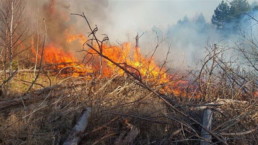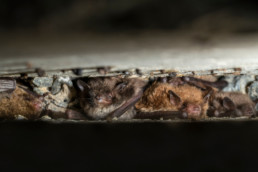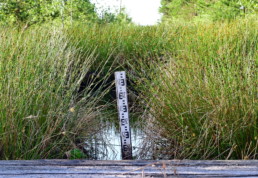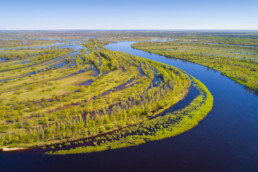Bird's-eye view of the warzone: the armed conflict in Ukraine impacts seasonal migration
Polesia is a stronghold for many rare species, including the Greater Spotted Eagle, which is listed as Vulnerable on the IUCN Red List of Threatened Species. 20% of the European population of this species breeds in Polesia. No wonder that these birds have been in the spotlight since the beginning of our project. To learn more about their behaviour, migration patterns and wintering grounds, we tagged more than 20 Greater Spotted Eagles with GPS transmitters as part of our project. No one could have even imagined that the data obtained in this way would be used to analyse the impact of a bloody military conflict on these rare birds.
On the 24th of February, 2022, the Russian Federation started its military invasion of Ukraine. And on the 3rd of March, the first of 19 GPS-tagged Greater Spotted Eagles began arriving in Ukraine from the south, on their annual migration route to breeding grounds in the Belarusian part of Polesia. Meanwhile, military activity was spreading, affecting more and more areas. Although shocked by the events, researchers realised that this was a rare opportunity to obtain information of unique scientific importance. Wars obviously have an impact on wildlife – both directly, via mortality and environmental damage, and in many ways indirectly. But it is always difficult and dangerous to study these processes, let alone obtain real-time data. To date, most such studies have focused on sedentary species living in areas close to military training sites. At the same time, the impact of military conflicts on migratory birds has been poorly understood, despite the fact that the world’s major migratory corridors cross several active military conflict zones.
The researchers tracked the migration routes of GPS-tagged Greater Spotted Eagles in the spring of 2022 and then correlated this information with data from the Armed Conflict Location and Event Data (ACLED) project. They found out that the birds showed typical migratory behaviour before arriving in Ukraine. However, once they reached the active war zone, they started exhibiting different behaviour compared to previous years.
Prior to 2022, 90% of the birds observed stopped over in Ukraine on their way to their breeding grounds, whereas in 2022 only a third of the birds stopped over at the common sites.
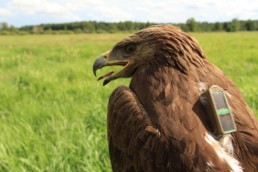
The Greater Spotted Eagles also showed significant route deviations.In addition, they migrated 20-30% slower and their migration through Ukraine took longer than in previous years (25% longer for females and 50% longer for males). As a result, the birds arrived at their breeding grounds later than usual, and the energetic cost of the migration increased. The authors of this research suppose that the changes in the birds`behavior caused by the military conflict could have sublethal fitness effects on the Greater Spotted Eagles.
The authors of the study cite a female Greater Spotted Eagle nicknamed Denisa as an example of non-typical migration behavior in spring 2022. She was exposed to numerous war events. After witnessing artillery fire and explosions along her route, she moved westwards to avoid crossing active conflict zones. The graph shows Denisa’s migration route and the war events she faced on her way.
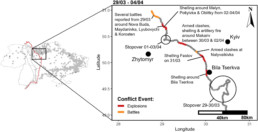
Previous studies have shown that numerous and varied anthropogenic disturbances, especially those that are unexpected, can cause severe and prolonged stress that significantly alters the behaviour of wildlife. However, armed conflicts involving shelling and explosions, mining, heavy traffic, human migration, direct habitat destruction, wildfires and many more far exceed any other anthropogenic activity in terms of intensity. Such extreme disturbance can potentially have long-term effects on sensitive Greater Spotted Eagles, causing deterioration in their body condition and affecting the reproductive success of the birds breeding in and around conflict zones. This is particularly important given that their breeding success is comparatively low on average.
The authors of the paper emphasise that human conflicts can have serious direct and indirect effects on migratory species, not only in Ukraine but also in other war zones along globally important migratory routes, which could be detrimental to hundreds of endangered species and millions of migratory birds.
The project “Polesia – Wilderness Without Borders” is part of the Endangered Landscapes & Seascapes Programme and is funded by Arcadia. The project is coordinated by Frankfurt Zoological Society (FZS).


